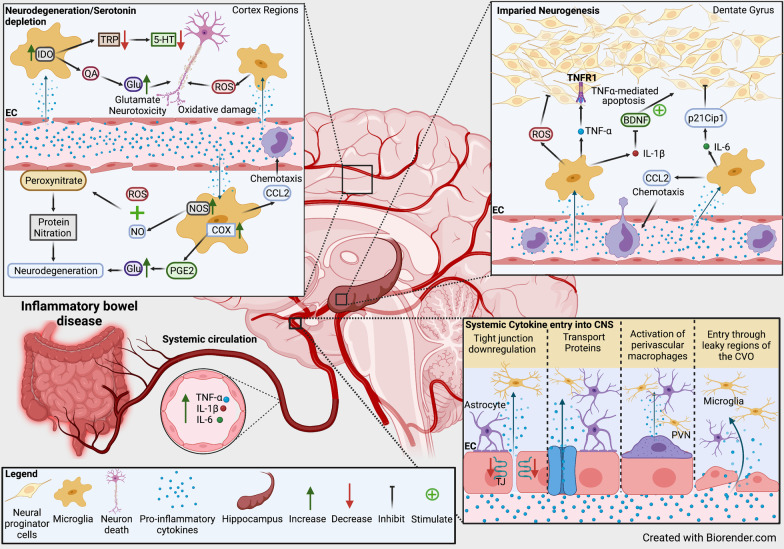Fig. 2.
Schematic diagram of neuroinflammatory changes seen in and postulated in human and animals with intestinal inflammation. Circulating inflammatory mediators enter into brain parenchyma through the suggested mechanisms whereby they may modulate local glia populations such as the microglia. Microglia can impact the various neurobiological correlates of depression including neurodegeneration, serotonin biosynthesis, and hippocampal neurogenesis. 5-HT 5-hydroxytryptamine (serotonin); BDNF brain-derived neurotrophic factor; CCL2 chemokine (C–C motif) ligand 2; CNS central nervous system; COX cyclooxygenase; CVO circumventricular organ; EC endothelial cells; Glu glutamate; IDO indoleamine-pyrrole 2,3-dioxygenase; IL interleukin; NO nitric oxide; NOS nitric oxide synthase; PGE2 prostaglandin E2; PVN perivascular macrophages; QA quinolinic acid; ROS reactive oxygen species; TJ tight junction; TNF tumour necrosis factor; TNFR1 tumour necrosis factor receptor-1; TRP tryptophan

